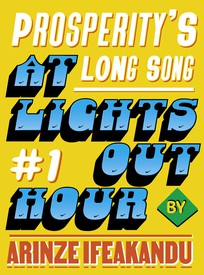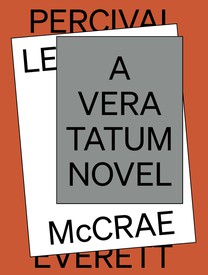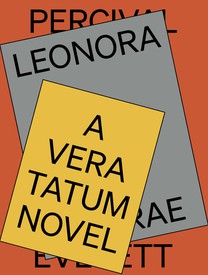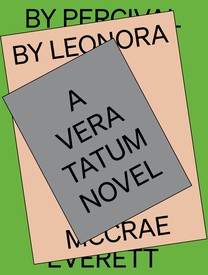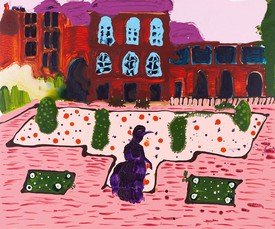
Venita Blackburn’s writing has appeared in thenewyorker.com, Harper’s, Ploughshares, McSweeney’s, the Paris Review, and other publications. The winner of the Prairie Schooner book prize in fiction for her collected stories, Black Jesus and Other Superheroes, in 2017, she is the founder of the literary nonprofit Live, Write (livewriteworkshop.com), which provides free creative-writing workshops for communities of color. Blackburn’s second collection of stories, How to Wrestle a Girl, was published in the fall of 2021. She is an assistant professor of creative writing at California State University, Fresno.
Before Rebecca, my first encounter with a ghoul was in 1492 sailing the ocean blue lolol, ok I didn’t actually sail anywhere being a spectral spirit of utter chaos, but I lingered on ships and would drift about. Most of my actual experiences with ghouls are just watery memories of dreams rather than true connections. Ghouls don’t follow back. I always swiped right you know, but what will be will friggin be and drive me to the wall in despair. They love that shit. The ghouls I’ve known used to wear purses sewn from the skin of flayed soldiers during the crusades or was it the revolution, which revolution is hard to say. The gnashers will always have their wars. Gnashers call themselves lots of things: people, human, politicians, jurors, barbers, dentists, husbands and daughters, men and their lust for punishment and validation through brutality. I call them boring. The gnashers are full of fear and shame, a buffet for the ghouls. I’ve glimpsed a few here and there in their varied forms, one a rolling tumbleweed of kidneys that left a sluglike trail of fluids, another a wall of rotting teeth in a blind face wearing the pristine suit of a Moroccan merchant or maybe a Welsh librarian. Don’t get me started on the colonial era, total shit show. They have many names too, some forgotten, others only thoughts, and if you speak that language by accident or instinct in your mind they will manifest at your feet or sometimes right around your chest bones and walk the earth as you for a lifetime. That kind of ghoul is a maestro, a savant, a genius, sure to give every poltergeist within the continental radius a lady boner. That kind of ghoul was a rare bird as they say. Mostly they are an echo of madness that eat up a nightmare after they cook it in someone’s mind.
Then there was Rebecca. Rebecca smelled like cardamom and tasted like candy cap mushrooms. I’ve said too much already, but secrecy has never been a strong suit for me, and Rebecca would want me to be secretive, our shames so muddled like snow, oil, and urine in a New York street of any postindustrial decade or century, a thing to look away from and pretend that the day is beautiful and all good things don’t end in ruin when they quite obviously, quite astoundingly do. Can a poltergeist like myself, a being of long life, terrible will, and the most freeing disregard for the living be so butt-fucked to total destruction that they find it hard to wring a scream from an arachnophobe with a camel spider? Rebecca is the answer. I’m already wet.
Now I’ve seen other rascals, lesser ghouls than Rebecca, crash subway cars, create tidal waves on ports that sent containers of goods cascading into the sea, pop every balloon at a birthday party in terrifying sequence, spill folks’ coffee after waiting in line for thirty-seven minutes at an overpriced café in downtown Portland then cause a hallucination so real it forces women to leave their husbands and children to become generational curses. Friggin cool. Most ghouls have demicorporeal forms, meaning they are there and not there, real and not real, a massless link to the other worlds yet fleshy as a bowl of rotting fruit and just as fragrant. I’ve seen ghouls look like boulders of shredded muscle and bone with arms shooting from all sides like a virus. One in the Andes back in 1701 had four heads of buffalo stacked on top of each other and no torso, just tibia coming out of the jaws and little bells on the toes. Weird af.
Those are not the most interesting ones though. Some are what the gnashers call gorgeous. These ghouls are beautiful to them, symmetrical, with pheromones like cedar trees and ambergris. To smell them is to feast on a dream, to crave the heat they emit like healing post wound. They are clever and irresistible, true fiends that are difficult to spot for the inexperienced. I, a poltergeist of some wisdom if I do say so myself, can spot any ghoul by smell alone and of course the flies. We dated.
That ghoul had already possessed a grieving school teacher named Rebecca in Alabama back in 1907, and so began Rebecca’s unraveling and to me her becoming. The teacher recently buried her preacher husband because of a skirmish with rogue gnashers. Gnashers will kill in the name of their god, in the name of the shade of their own flesh, and sometimes a combination of the two. It was a ghoul’s paradise in those times and all times really, but don’t mistake my point. The ghouls are not the creators of suffering and not wholly instigators either. They get a bad rep among people who will blame their own mothers for every failure of conscience from infancy to the tomb. I’m just like wow. Anyway, I watched the ghoul roam in and out of the townsfolk letting their words flow out of its mouth:
So sorry for your loss child.
We are praying for you.
The Lord has a guiding light at your eyes. Don’t turn away.
The ghoul loved the taste of pain on its tongue, but it was the people that spoke to Rebecca, always reminding her of the grief whenever something as small as a cricket or dandy lion dared take her mind off of it. Some of the gnashers even thought they were doing the right thing. LMAO. They love to hurt and will call it kindness. Everyone reminded her of the grave, and the rot, and the promise of tomorrow that does not exist today because today was shit and pain. Everyone except Sadie.
Rebecca took walks in the daytime when it was safest in case any of her husband’s murderers returned to play a more cruel joke on the dead and defile a widow. It would’ve been delicious to the ghoul but difficult to pull off with the will of so many people aimed at revenge instead. That is far more appetizing.
Sadie was a prostitute, dark like the woods with eyes that carried the weight of living in a hot world. They would meet on their walks around the town in the dewy part of the day when most were still sleeping.
Take this.
It’s too early.
Take it. I put coffee in it this time.
Rebecca waved away a pesky fly and drank the spirits in all the ways.
Sadie, a woman who knew men in the biblical sense ha, was not an ideal friend or lover for a respectable schoolteacher, but I suppose losing a loved one makes people question the rules of the living. So Rebecca slowly and unknowingly nursed an infatuation with that Sadie. I’d been hopping from rat to pirate to donkey to governor for nine years and was bored out of my mind. Don’t get me started on the fleas, and if anyone asks you which is cleaner, a donkey or a governor, I’ll swear on my immortal soul the donkey can sleep in my bed any day. I watched the two women then while resting inside of a lizard, occasionally compelled to lick the dry out of my eyes. Terribly annoying. The two had nothing between them very interesting and the ghoul could not possess them both so was always a little malnourished whenever Sadie was around until one day.
Poor Sadie, so sweet, smooth skinned, and popular. On those late mornings Rebecca would bring Sadie sugarcane before opening up the bar and they’d walk again for a short time along the dirt road chewing together. Sadie had her own sad tales to share like her father dying of consumption (whatever the hell that was), his bloated body loathed and discarded like moldy cheese. Sadie was alone and weepy as a child, and a sad lonely girl is good for only a few things in any gnasher town.
The day circumstances changed for, well, the better depending on who you’re asking is when Rebecca dropped her sugarcane into the dirt. Sadie laughed and moaned into her own treat as a healthy tease. Mockery is fun but still too tainted by love to be useful to my ghoul. Rebecca proceeded to take the sugar by force and there was a bit of girly tugging and touching and whatnot, ugh obvious foreplay if they’d ever figure it out, but that bunch hadn’t the slightest clue after so many centuries of sexual repression and fascination with ownership of everything except their own orgasms. Sadie surrendered her sugarcane in exchange for holding Rebecca’s hand while they walked. The deal was struck. As they held each other, the tendril of attraction snaking so thoroughly through their hearts, a boy crossed their paths.
Hi Ms. Sadie.
He spoke before giggling and running off.
It was one of Rebecca’s students though every child under fifteen was one of Rebecca’s students. Rebecca snatched back her hand from Sadie the moment the boy spoke. He saw their subtle intimacy. He mocked them. He acknowledged a harlot before his own teacher. Half of that imagined or none or all. There it was. The ghoul trembled. I trembled. The feelings were small then, but they rang out loud to us—shame, pride, and a sprinkle of vanity. That was worth sticking around that dusty little gnasher village for as long as necessary to cultivate Rebecca into a quivering mess of dark energy. I could see the ghoul nestling tighter into Rebecca, grotesque and lovely, roosting over the shame like a hen. So friggin cute!
Sadie started cooking meals for Rebecca, which she was thankful for less and less. Sadie would swat and kill flies that bothered Rebecca and divert any unwanted attention from the meddling townsfolk whenever she could and so the ghoul noticed and I noticed the ghoul. A cloud of flies floated across the town like a plague, but by then everyone was used to it as if it were always there. I watched the flies disappear and Rebecca’s eyes grow cloudy, irises rimmed in blood, leaking mucus from the infection of the beast. She was so beautiful. The locals thought she was just grieving hard, but I knew the ghoul saw an opportunity for mayhem in Rebecca. When one is loved and weak there is a chance to corrupt that love into something so bitter it curses a land for seasons. Even weeds won’t grow. If I were stronger, I would’ve let the artist work, let the ghoul finesse the love and obsession into a shredding of the conscious self where another’s impossible salvation and happiness will take every drop of energy and cost her weight in suffering as payment. I’m not strong! I wanted to get close to the monster inside of Rebecca, so I possessed Sadie before she could see the change in her new girlfriend. Let me be clear. Possession of the human soul is not easy. People think we just jump from one wretched soul to another like hopscotch. It’s more like filling a raw egg with another yolk. First you drill a tiny hole in the shell then with some patience and a lot of fucking skill, possession is manifest. Most of the time we just hold the egg and roll around with it before the inevitable crack, but true integration of the spectral and the corporeal is a big fat ordeal. And there’s no manual! We just have to figure this out one exhausting leap at a time. Typically, there’s a lot of vomiting (movies totally nailed that), and allergic reactions like rash and suicidal ideation, of course, unless the host is totally vulnerable, so lost they are barely present in their own skin. That’s when it’s less of a grueling hike and more of a sit-down at a table in a fancy restaurant. With Sadie the linens were pressed nicely and French onion soup was on the menu.
The evening after Rebecca tore her hand from Sadie out of self-disgust there was a town meeting. Gnasher men stood inside the church before a densely packed congregation. Spring-night chill turned to humidity from breath and panic. Women screamed “We have to do something.” Men screamed “We will protect ourselves at any cost.” Others feared for the youth. Sadie saw Rebecca near the rear of the church where she always sat if she dared sit at all those days. Funny how grief will make people hate their god that never promised them much of anything else. The ghoul was in her. The ghoul was not yet her. Sadie sat beside Rebecca on the pew, a tight fit, but all made room. Everything was still to the two of them despite the chaos and blood lust that distracted both the ghoul and I. There was so much to eat. Sadie put the back of her hand against Rebecca’s thigh as if she only meant to smooth the skirts between them. They were still again, that silvery tingle of love and forgiveness charging between them as well as an apology.
If you all die in this fight for revenge, who will care for the children?
I can fight!
It was the boy from the morning, Rebecca’s student. The men cheered. The women cheered. Rebecca stood and everyone around then stood as well, taking her rise from the pew as a signal of agreement. It was easy for Rebecca to leave at that moment under the chins of tall men eager to shake each other by the shoulder and stir the storms of battle no matter how self-destructive. Rebecca and the ghoul walked out into the new night, leaving Sadie and me in the hum of our lust, a small cruelty in comparison to the delectable suffering yet to come.
So Sadie and I followed, both of us wanting to touch our loves more than ever, having come so close. There were streetlamps on the road and plenty of shadows for us to fondle ourselves dizzy in, but this ghoul knew better. Cultivating shame requires the risk of exposure, so Rebecca stood under the lamp light, her skin blue as the sky above, radiant and warm. Sadie and I could feel her before even coming into contact. Whether it was me horny as hell or Sadie or both didn’t matter anymore. To me the town could burn us all as fornicating Salemites because I had to have it, but Sadie was not there yet. A glance over her shoulder, a glance to the “heavens” oh my. I was getting vertigo from the head swivels. There was more than shame now. We had guilt. We had a devout-man-of-God husband barely dehydrated in the grave, a town full of judgy angry motherfuckers, and a God with who knows what to say. Personally, I’m sure Jesus knows what’s good. Sadie landed both hands around Rebecca’s ribs their faces with almost no air between them. The sounds of people and the doors of the church opened. Rebecca didn’t let go until the lust was swamped by fear and Sadie wrenched herself free before anyone could see. There were plenty of names for their crime among the gnashers even if Sadie and Rebecca didn’t know them all. My ghoul was fed and the promise of tomorrow would keep Sadie and me awake until the sun rose.
Text © Venita Blackburn
Read “Memoirs of a Poltergeist: Part 2,” “Memoirs of a Poltergeist: Part 3,” and “Memoirs of a Poltergeist: Part 4”
